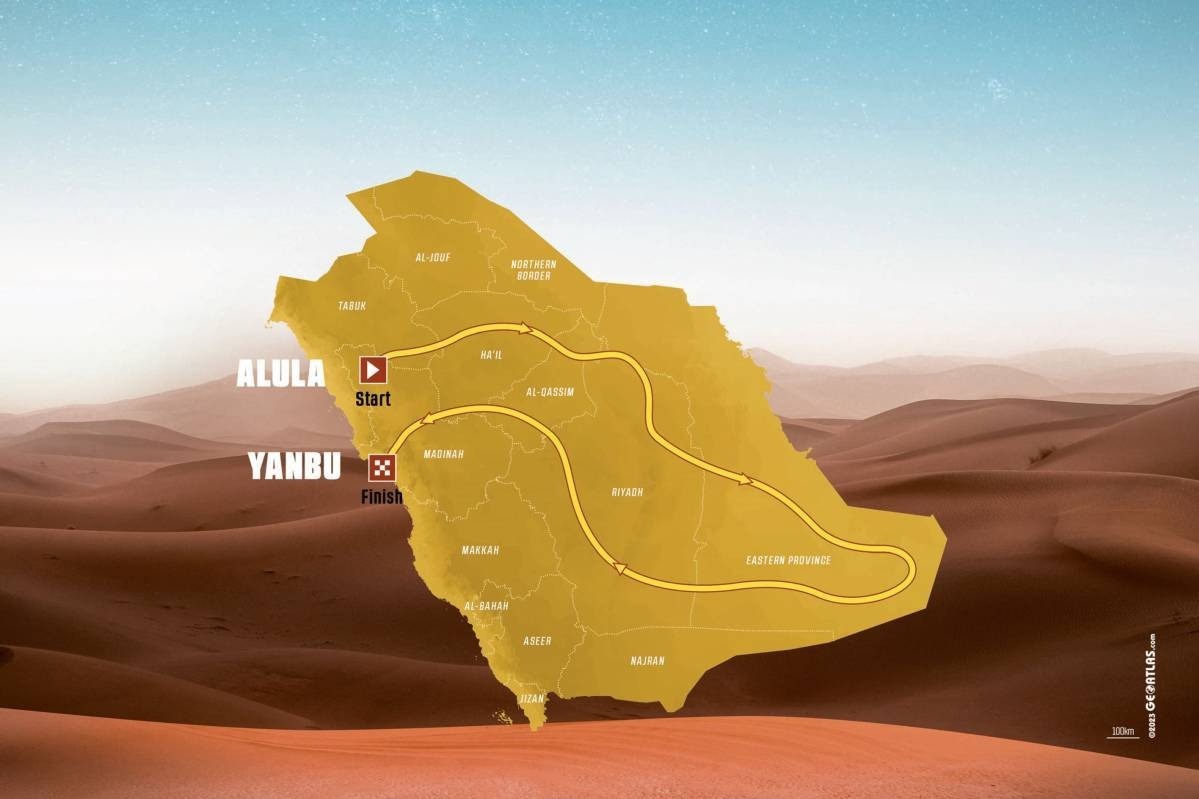The event will remain in Saudi Arabia for the fifth year running, and will be held from 5 to 19 January.
The 5,000-kilometre route, encompassing a prologue and 12 competitive stages, will begin in the historic town of Al-Ula before competitors venture across the Empty Quarter to the Red Sea town of Yanbu.
Organisers state that 60% of stages will be new, with the most significant novelty coming in the form of a so-called ’48h chrono stage’ covering 600km across two days with an overnight halt.
Competitors will be divided into eight different bivouacs depending on where they are when the clock strikes 16:00, before setting off the following morning at 07:00 to complete the stage in the Empty Quarter.
Significantly, there will be two different routes with cars and trucks split from bikes and quads so they will not benefit from the two-wheeled competitors’ ruts.

Meanwhile, around 10 vehicles, including cars, bikes and trucks, are expected to take part in the Dakar Future programme on a different route from the official one.
Vehicles with hydrogen engines, fully electric powertrains or hybrids with a minimum of biofuel will be eligible, with the contest monitored by a jury of experts who will measure technical reliability, energy consumption and carbon footprint.







